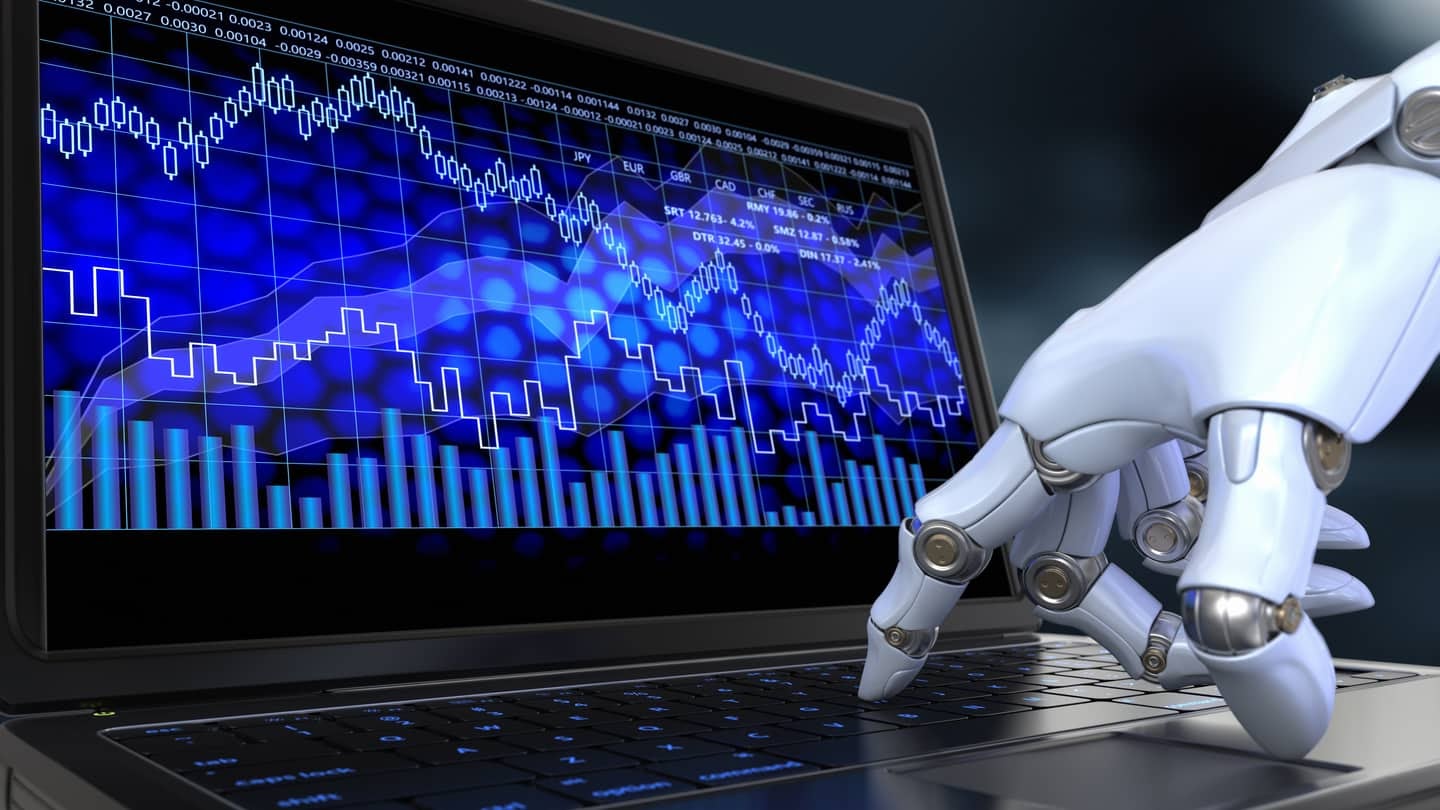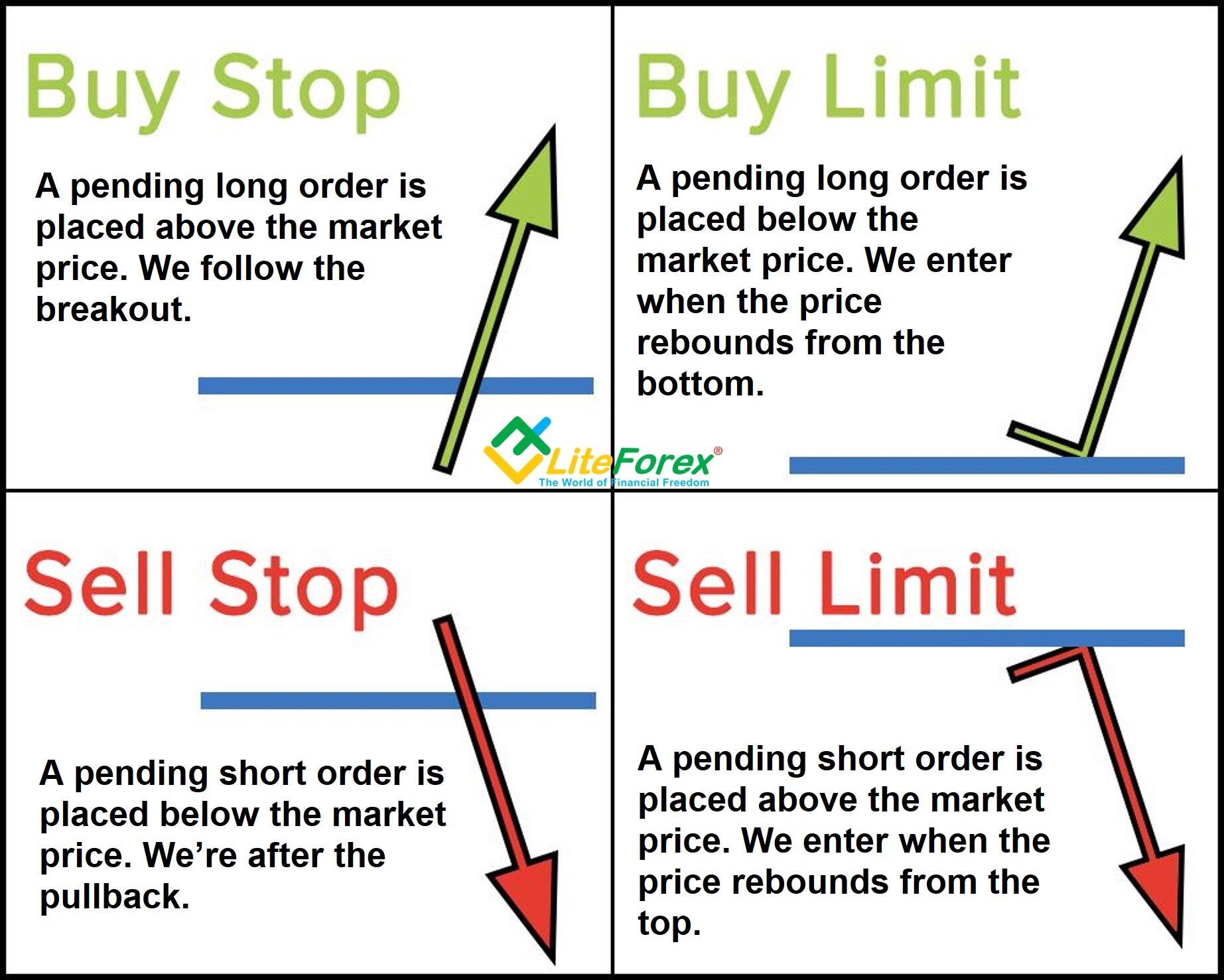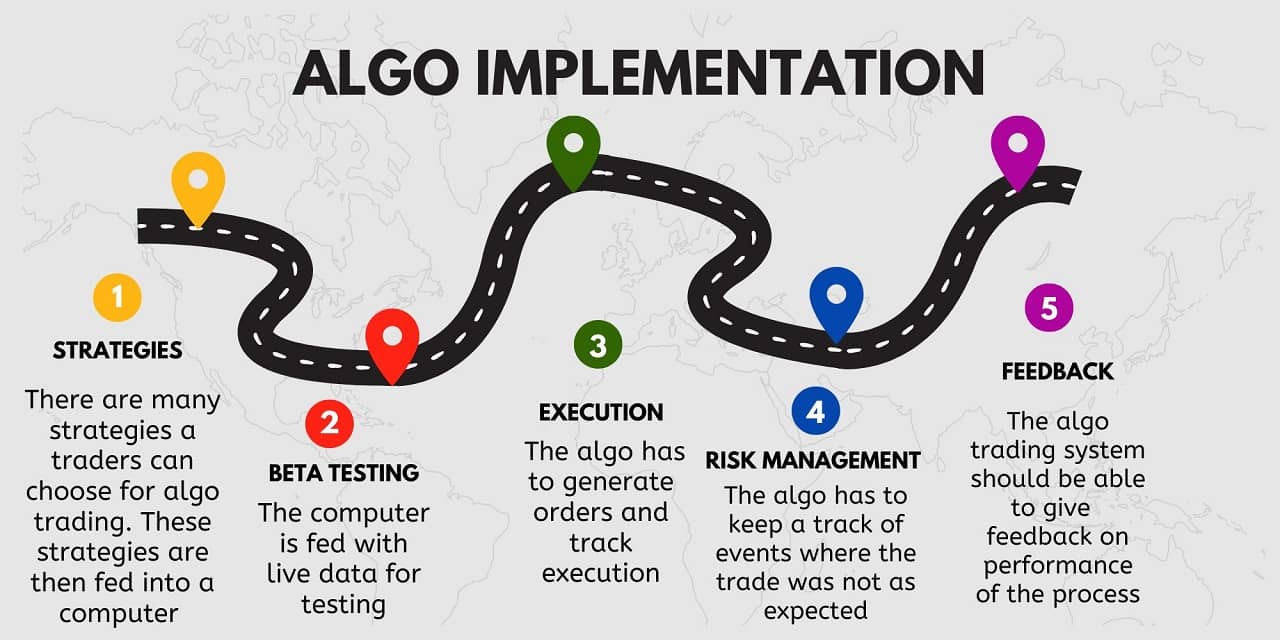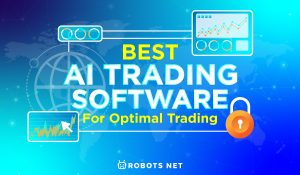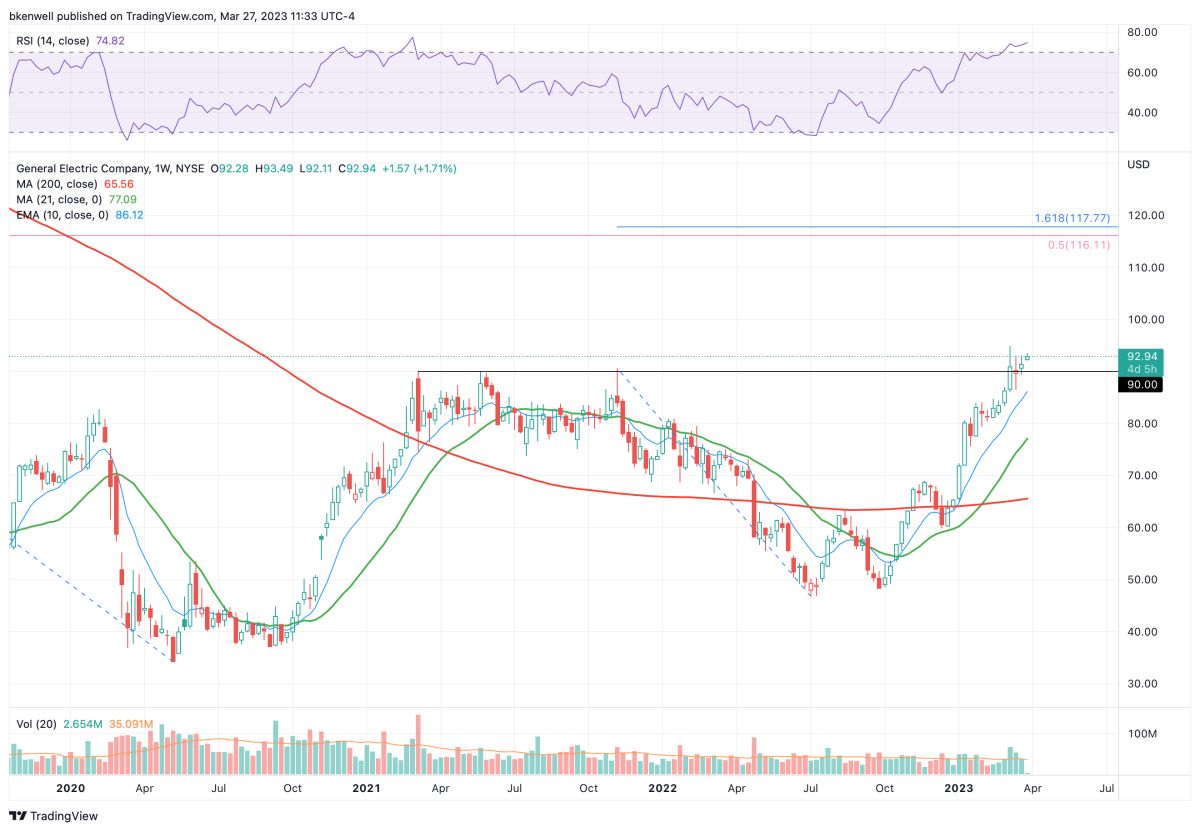Introduction
Automated trading, also known as algorithmic trading or robotic trading, has revolutionized the way financial markets operate. By using advanced computer algorithms, automated trading allows traders to execute trades without human intervention, making the process faster, more efficient, and less prone to human error. This cutting-edge technology has gained significant popularity in recent years, transforming the landscape of trading.
With the rise of automation in various industries, it was only a matter of time before trading followed suit. Automated trading systems analyze vast amounts of data, identify trading opportunities, and execute trades based on predefined criteria. This eliminates human bias and emotions from the decision-making process, leading to more disciplined and objective trading.
The primary objective of automated trading is to capitalize on market inefficiencies, volatility, and price movements that human traders may not be able to exploit. By leveraging complex mathematical models and predefined trading strategies, automated trading systems can act quickly and execute trades in fractions of a second, making it particularly advantageous in high-frequency trading environments.
This article aims to demystify automated trading, providing insights into its definition, functioning, benefits, risks, and popular trading strategies. It will also highlight important factors to consider when choosing an automated trading system and provide guidance on getting started with automated trading.
Whether you are an experienced trader looking to optimize your trading activities or a novice trader interested in exploring the world of algorithmic trading, this article will equip you with the necessary knowledge to dive into the exciting realm of automated trading.
Definition of Automated Trading
Automated trading, also referred to as algorithmic trading or robotic trading, is a method of executing trades in financial markets with minimal to no human intervention. It involves the use of sophisticated computer algorithms that analyze market data, identify trading opportunities, and automatically execute trades based on predefined rules and strategies.
These trading algorithms are programmed to follow a set of rules and parameters, which can include factors such as price, volume, timing, and technical indicators. The algorithms use historical and real-time market data to make informed trading decisions and execute trades at optimal prices and timings.
Automated trading systems can be designed to trade a variety of financial instruments, including stocks, bonds, forex, commodities, and derivatives. They can execute trades across multiple markets and exchanges simultaneously, taking advantage of market opportunities that may arise within seconds.
One of the key features of automated trading systems is their ability to execute trades at a much faster pace than human traders. This is particularly beneficial in high-frequency trading, where speed is crucial in capturing fleeting market opportunities and maximizing profitability.
Another distinguishing factor of automated trading is its ability to remove human emotions from the trading process. Emotions such as fear and greed can often cloud judgment and lead to irrational trading decisions. Automated trading systems operate based on predetermined rules and do not get influenced by emotions, ensuring a disciplined and objective approach to trading.
It is important to note that while automated trading systems can facilitate trading activities, they are not foolproof. They are designed to assist traders in executing trades based on predefined strategies, but they do not guarantee profits. The success of automated trading ultimately depends on the quality of the trading strategy, the accuracy of the algorithms, and the prevailing market conditions.
In the next section, we will delve into how automated trading systems work and the mechanisms behind their execution of trades.
How Does Automated Trading Work?
Automated trading systems rely on advanced algorithms and computer programs to analyze market data, identify trading opportunities, and execute trades. Let’s take a closer look at the key components and processes involved in the functioning of automated trading:
- Data Analysis: Automated trading systems gather vast amounts of market data, including historical price and volume data, real-time market feeds, news, and other relevant information. These systems use complex mathematical and statistical models to analyze this data and identify potential trading opportunities.
- Trading Strategies: Traders can develop or customize trading strategies based on their preferences and objectives. These strategies define the rules and conditions for entering and exiting trades, as well as risk management parameters such as stop-loss orders and take-profit levels. Strategies can encompass a wide range of factors, including technical indicators, trend analysis, and fundamental analysis.
- Automated Order Placement: Once a trading opportunity is identified, the automated trading system generates and places orders according to the predefined trading strategy. These orders are sent directly to the trading platform or market exchange, eliminating the need for manual order placement.
- Order Execution: The automated trading system keeps a constant watch on the market and executes trades based on the predefined rules. It can execute multiple trades simultaneously across different markets and timeframes, taking advantage of opportunities that may arise within milliseconds.
- Risk Management: Effective risk management is a crucial aspect of automated trading. Traders can implement various risk management features such as setting maximum position sizes, applying stop-loss orders to limit potential losses, and utilizing trailing stop orders to protect profits.
- Monitoring and Optimization: Automated trading systems continuously monitor and analyze market conditions and the performance of executed trades. Traders can use this data to optimize their strategies, make necessary adjustments, and refine their approach to achieve better trading results.
It is important to note that although automated trading systems operate independently, traders still play a vital role in their effectiveness. Traders are responsible for developing, testing, and fine-tuning the trading strategies used by the automated system. They also need to monitor the system’s performance, ensure proper risk management, and stay updated with market conditions that may require adjustments to the trading strategy.
Now that we have explored how automated trading works, let’s delve into the benefits it offers to traders.
Benefits of Automated Trading
Automated trading offers numerous benefits to traders, empowering them with advantages that can significantly enhance their trading activities. Let’s examine some of the key benefits of using automated trading systems:
- Speed and Efficiency: Automated trading systems can execute trades at lightning-fast speeds, far surpassing the capabilities of human traders. They can instantly analyze market conditions, identify opportunities, and execute trades within fractions of a second. This speed and efficiency help traders capitalize on even the smallest market movements and take advantage of high-frequency trading opportunities.
- Elimination of Emotions: Emotions like fear and greed can often cloud judgment and lead to irrational trading decisions. Automated trading systems operate based on predefined rules and algorithms, eliminating the influence of emotions from the trading process. This ensures a disciplined and objective approach to trading, leading to more consistent and rational decision-making.
- 24/7 Market Monitoring: Unlike human traders, automated trading systems can operate around the clock, monitoring the markets for potential opportunities and executing trades even when traders are asleep or unable to actively trade. This constant market monitoring eliminates the risk of missing out on lucrative trading opportunities due to time constraints.
- Backtesting and Optimization: Automated trading systems allow traders to backtest their trading strategies using historical market data. This enables traders to evaluate the performance of their strategies over different market conditions and timeframes. Additionally, traders can optimize their strategies based on backtesting results, making necessary adjustments to improve the system’s performance.
- Improved Order Execution: Automated trading systems can execute trades at the best possible prices, thanks to their ability to process vast amounts of market data instantly. This can help minimize slippage and ensure that trades are executed with minimal delay, enhancing overall trading performance.
- Diversification: Automated trading systems can trade across multiple markets and instruments simultaneously. This allows traders to diversify their trading activities and reduce the risk of relying on a single market or instrument. Diversification can help spread risk and potentially enhance overall portfolio performance.
By harnessing the power of automation, traders can leverage these benefits to gain a competitive edge in the market. However, it is important to acknowledge that automated trading comes with its own set of risks and challenges, which we will discuss in the following section.
Risks and Challenges of Automated Trading
While automated trading offers significant advantages, it is important for traders to be aware of the risks and challenges associated with this approach. Understanding these risks can help traders make informed decisions and implement strategies to mitigate potential pitfalls. Let’s explore some of the key risks and challenges of automated trading:
- Technical Failures: Automated trading systems are reliant on technological infrastructure, including computer hardware, software, and internet connectivity. Any technical failures or disruptions can lead to system malfunctions and result in missed trades or erroneous executions. Traders should have backup systems in place and regularly monitor the performance and reliability of their automated trading setup.
- Complexity and System Errors: Designing and implementing a successful automated trading system requires expertise in programming and algorithm development. Errors in the code or incorrect implementation of trading strategies can lead to unintended consequences and financial losses. Traders should thoroughly test their systems and ensure proper risk management protocols are in place.
- Market Volatility and Black Swan Events: Automated trading systems can be susceptible to market volatility and extreme events that may deviate from historical data or normal trading conditions. Sharp price movements, sudden news events, or market manipulation can impact the performance of automated trading systems and lead to unexpected results. Traders should incorporate risk management measures to handle market uncertainty.
- Over-optimization and Curve Fitting: Traders may be tempted to over-optimize their trading strategies based on past performance, resulting in curve-fitting. Curve-fitting occurs when a strategy is too specific to historical data, making it less effective in real-time market conditions. Traders should strike a balance between optimizing their strategies and ensuring they remain adaptable to changing market environments.
- Dependency on Market Data: Automated trading systems heavily rely on accurate and reliable market data. Inaccurate or delayed data can lead to flawed analyses and incorrect trading decisions. Traders should have access to high-quality data feeds and establish procedures to verify the integrity of the data being used by their systems.
- Regulatory and Legal Considerations: Traders engaging in automated trading must comply with relevant regulatory requirements and legal obligations. Different jurisdictions have specific rules and regulations concerning algorithmic trading, including risk controls, reporting obligations, and market manipulation prevention. Traders should stay updated with the regulatory landscape and ensure their automated trading activities are in compliance with applicable laws.
By understanding and managing these risks and challenges, traders can effectively navigate the world of automated trading and maximize its potential benefits. In the next section, we will explore some popular automated trading strategies that traders can consider.
Popular Automated Trading Strategies
Automated trading systems can employ a wide range of strategies, depending on the trader’s goals, risk tolerance, and market conditions. These strategies are typically implemented through a combination of technical indicators, mathematical models, and statistical analysis. Let’s explore some popular automated trading strategies:
- Momentum Trading: Momentum trading strategies seek to capitalize on trends and price movements in the market. These strategies aim to identify assets that are exhibiting significant upward or downward momentum and enter trades in the direction of the prevailing trend.
- Mean Reversion: Mean reversion strategies operate on the premise that prices will eventually revert to their mean or average value after deviating from it. These strategies take advantage of overbought or oversold conditions by entering trades against the prevailing trend.
- Breakout Trading: Breakout strategies aim to identify key support and resistance levels and capitalize on price breakouts beyond these levels. When a price breaks above a resistance level or below a support level, an automated trading system can enter a trade in the direction of the breakout.
- Arbitrage: Arbitrage strategies involve exploiting price discrepancies between two or more markets or financial instruments. These strategies aim to profit from temporary price imbalances by simultaneously buying and selling assets to take advantage of the price differential.
- Pairs Trading: Pairs trading involves trading two correlated assets simultaneously. The strategy aims to identify pairs of assets that have a historically stable price relationship. When the price relationship deviates from its historical norm, the automated trading system can enter trades to take advantage of the expected convergence of prices.
These are just a few examples of the many automated trading strategies that traders can implement. Each strategy has its own strengths and weaknesses, and it is important for traders to thoroughly backtest and evaluate the performance of a strategy before deploying it in live trading. Additionally, traders can also combine multiple strategies or customize existing strategies to create their unique trading approach.
It is worth noting that the effectiveness of a trading strategy may vary depending on market conditions and other factors. Traders should regularly monitor and adjust their strategies as needed to adapt to changing market dynamics and optimize performance.
Now that we have explored popular automated trading strategies, let’s move on to discussing important factors to consider when choosing an automated trading system.
Important Factors to Consider When Choosing an Automated Trading System
When selecting an automated trading system, it is crucial to consider several factors that can impact its performance, reliability, and suitability for your trading needs. Let’s explore some important considerations when choosing an automated trading system:
- Strategy and Customization: Consider the trading strategies offered by the system and ensure they align with your trading goals and risk tolerance. Look for systems that allow customization, enabling you to modify or create your own trading strategies if needed.
- Backtesting and Optimization: The ability to backtest and optimize trading strategies is essential. Ensure that the system provides robust backtesting capabilities using historical data and enables you to fine-tune your strategies based on the results.
- Real-Time Data and Connectivity: Access to timely and accurate market data is vital for automated trading. Check if the system has reliable connections to data providers and exchanges, ensuring that you receive up-to-date information for accurate decision-making and execution.
- Risk Management Features: Evaluate the risk management tools and features offered by the system. Look for features such as stop-loss orders, trailing stops, and position sizing options that can help manage risk and protect your capital.
- Technical Support and Documentation: Consider the level of technical support provided by the system’s developers or providers. Ensure there is accessible documentation, tutorials, and responsive customer support to assist you with any questions or issues that may arise.
- Security and Reliability: Automated trading systems handle sensitive trading data and execute trades on your behalf. Check the security measures implemented by the system to protect your data and ensure that the system has a track record of reliability and uptime.
- Costs and Fees: Assess the pricing structure and fees associated with the system. Consider factors such as upfront costs, ongoing subscription fees, commission fees per trade, and any additional charges for data feeds or additional features.
- Integration with Brokerage: If you have a preferred brokerage or trading platform, check if the automated trading system is compatible and can integrate seamlessly. This allows for efficient execution of trades and streamlined account management.
It is crucial to thoroughly research and evaluate different automated trading systems before making a decision. Consider demo accounts or trial periods offered by system providers to assess the system’s performance and suitability for your trading style.
Always remember that the automated trading system is a tool that should assist and complement your trading activities. It is essential to have a clear understanding of your trading goals, risk appetite, and trading strategy before selecting an automated trading system.
Now that we have covered the factors to consider when choosing an automated trading system, let’s move on to discussing how to get started with automated trading.
How to Get Started with Automated Trading
Embarking on the journey of automated trading requires careful planning and execution. Here are some key steps to help you get started:
- Educate Yourself: Gain a solid understanding of how automated trading works, including different strategies, technical indicators, risk management techniques, and market dynamics. Take the time to learn about programming, algorithm development, and the tools used in automated trading.
- Define Your Trading Goals: Clearly define your trading goals, risk tolerance, and preferred trading style. Determine the markets you want to trade in and the timeframes you wish to focus on. This clarity will help you choose appropriate automated trading systems and strategies that align with your objectives.
- Choose an Automated Trading Platform: Select a reliable and reputable automated trading platform that offers the features and functionalities you require. Consider factors such as ease of use, customization options, backtesting capabilities, and compatibility with your preferred brokerage or trading platform.
- Develop or Customize Your Trading Strategy: Build or customize a trading strategy that suits your goals and risk tolerance. Utilize the tools and features provided by the chosen automated trading platform to implement and test your strategy. Consider thorough backtesting to evaluate the strategy’s performance across various market conditions.
- Optimization and Risk Management: Refine and optimize your strategy based on backtesting results. Implement risk management techniques, such as setting stop-loss orders and position sizes, to control risk and protect your capital. Continuously monitor and adjust your strategy as market conditions evolve.
- Live Trading with Small Investments: Once you have developed and tested your strategy, start live trading with small investments or utilizing a demo account. Monitor the performance of your automated trading system and analyze the results. Make necessary adjustments and refinements as you gain experience and learn from actual trading outcomes.
- Continuous Learning and Adaptation: Stay updated with market trends, news, and developments that impact your chosen markets. Keep learning about new strategies and techniques that could improve your automated trading system’s performance. Adapt and refine your approach based on the evolving market conditions.
- Monitor and Evaluate Performance: Regularly monitor the performance of your automated trading system. Assess its effectiveness based on predefined metrics such as profitability, drawdowns, and risk-adjusted returns. Use this data to make informed decisions and continuously optimize your strategy.
- Seek Professional Advice if Needed: If you are new to automated trading or require assistance, consider seeking guidance from professionals, such as financial advisors or experienced traders. They can provide valuable insights and help you navigate the complexities of automated trading.
Remember that success in automated trading requires both technical knowledge and continuous learning. Be patient, disciplined, and realistic in your expectations as you embark on your automated trading journey.
With these steps, you are well on your way to starting your automated trading journey. Take your time, practice, and adapt as needed to achieve your trading goals.
Conclusion
Automated trading has revolutionized the way traders participate in financial markets, offering speed, efficiency, and objectivity. By leveraging advanced algorithms, automated trading systems eliminate human emotions and biases from the decision-making process, leading to more disciplined and potentially profitable trading activities.
In this article, we have explored the definition of automated trading, how it works, its benefits, risks, popular trading strategies, and important factors to consider when choosing an automated trading system. We’ve also discussed how to get started with automated trading, emphasizing the significance of education, customization, risk management, and continuous learning.
While automated trading provides numerous advantages, it is essential to approach it with caution and understanding of the associated risks. Technical failures, market volatility, complexity, and over-optimization are all factors that traders must be mindful of when using automated trading systems.
Remember, automated trading is not a guaranteed road to profits, and it requires careful planning, strategy development, and continuous monitoring. It is important to thoroughly research and test automated trading systems, choosing those that align with your trading goals and risk tolerance.
As you embark on your automated trading journey, be patient and proactive in refining your strategies, optimizing your systems, and adapting to market changes. Continuous learning, staying updated with market trends, and seeking professional advice when needed will help you navigate the complexities of automated trading and increase your chances of success.
Ultimately, automated trading can be a powerful tool in your trading toolkit, empowering you to make data-driven decisions and capitalize on market opportunities with efficiency and precision.
So, are you ready to embrace the world of automated trading? Equip yourself with knowledge, develop robust strategies, and embark on the path to automated trading success!







